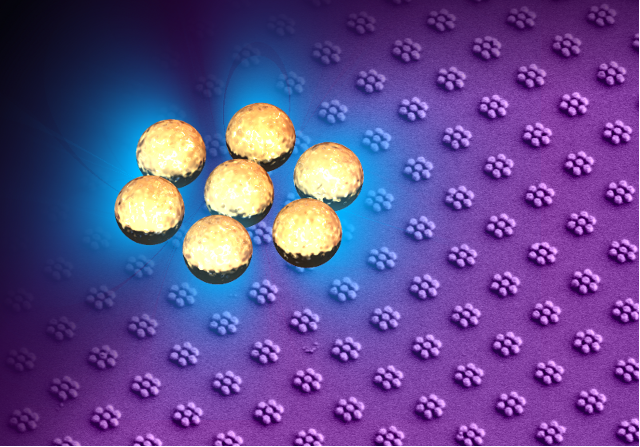
Gold heptamer structures show strong Fano resonances. The gold nanoparticles are only about 150 nanometers in diameter. (c) Sven Hein, Na Liu, Harald Giessen, University of Stuttgart, Germany.
Photonics is all about light. Processing of light for applications ranging from holograms and displays to optical telecommunications. Thanks to a better theoretical understanding and to advances in fabrication technology, photonic devices and gadgets have become increasingly versatile and powerful.
But photonics also has a dark side. In many light-processing devices and structures there are dark modes — oscillations of the light wave that while not forbidden cannot be directly excited by a given experimental configuration. In a violin for example, the strings are best sounded by drawing the bow perpendicular to their length.
However, the dark modes in photonic devices are not lost to applications. In the past months, researchers have developed new approaches that can make use of the dark modes by using interference effects with the allowed, bright modes. The resonances created by this interference are called Fano resonances, after Ugo Fano who first described them in 1961.
“Fano resonances are cool because they are the manifestations of dark modes that cannot be excited directly. In any system there are only a few bright modes but an infinite number of dark modes. The Fano resonance is the interference between a bright mode and one of the dark modes,” explains Peter Nordlander, a physicist from Rice University in Houston, Texas.
Fano resonances are very sharp, with a spectral shape that is much narrower than what can be achieved with comparable regular oscillators and their Lorentzian lineshape. This advantage makes them attractive for sensing applications. Because the spectra of Fano resonances are so narrow, the tiniest changes to the local environment of the resonator structures lead to noticeable shifts of the resonance wavelength. Even the presence of a single molecule could be detected.
[…]


August 24, 2010
3 Comments